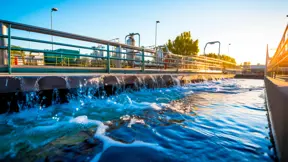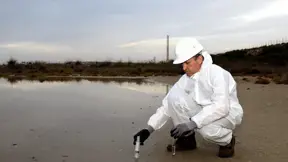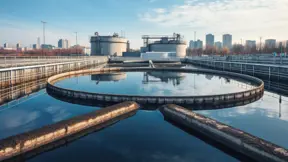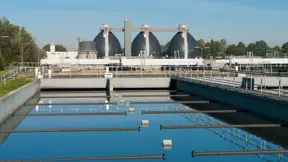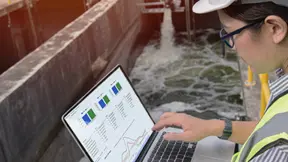
Increasing energy efficiency in Bjergmarken wastewater treatment plant
Modelling and testing a side-stream hydrolysis (SSH) process retrofit to replace an activated return sludge process (ARP)
The water utility company, FORS A/S, is always seeking new strategies to improve the efficiency of their Bjergmarken wastewater treatment plant (WWTP). Using our wastewater process modelling software, WEST, we identify the side-stream hydrolysis (SSH) process as the optimal replacement for an activated return sludge process (ARP). The model shows that using SSH can lead to more than a 20% savings in aeration energy consumption. After implementing the SSH retrofit, further testing shows increased energy efficiency and long-term operation stability.
Challenge
Reducing aeration energy consumption in treatment processes
The treatment train of Bjergmarken WWTP used the activated return sludge process (ARP) to increase sludge retention and treatment capacity. Due to the high concentrations of solids (> 10 kgSS/m3) treated in this operational process, there was inefficient oxygen transfer. This inefficiency required extensive aeration energy to maintain sufficient dissolved oxygen levels.
Multiple options for retrofitting this process were investigated to improve energy efficiency. One retrofit evaluation criterion required the new process to maintain a high level of treatment performance under typical and extreme conditions. Another criterion was to minimise changes in WWTP infrastructure or operations.
Client:
FORS A/S
Location:
Denmark
Related SDGs:
SDG 6: Ensure availability and sustainable management of water and sanitation for all
Technology:
Solution
Modelling the WWTP operations to identify optimal retrofit options
We used our wastewater systems modelling software, WEST, to develop a detailed model of the Bjergmarken WWTP. The model was calibrated using the WWTP’s historical data.
The WEST model virtually simulated and evaluated various retrofit options, thus avoiding interference with full-scale operation. Results from the assessment showed that converting the ARP into an SSH process could reduce the aeration energy consumption by more than 20%. Better still, model results indicated the SSH retrofit would have limited or no impact on treatment efficiency, effluent quality or require any additional chemical dosing.
Long-term reliability of the retrofit was tested in the model using historical data for Bjergmarken WWTP’s highest loading period during the annual Roskilde Festival. Roskilde Festival is one of largest music festivals in Europe and the largest in Northern Europe. This music festival usually produces a 50% N load and +70% P load. The test results showed the SSH retrofit was a reliable option under these extreme conditions, as well as under cold temperature conditions.
Following the model’s results, FORS A/S converted the ARP to SSH in their Bjergmarken WWTP. Longitudinal data was collected before and after the SSH was implemented which confirmed the WEST model’s predictions.
Results
- Reduced energy consumption < 22%
- Long-term stability of plant performance
- Limited impact on treatment efficiency
‘We had good cooperation with DHI, and it was easy to understand and implement the suggested solution. DHI has also been of great support after implementing the solution, allowing us to substantially improve the efficiency of Bjergmarken WWTP.’
Lars Lund Schjødt, Team Leader – Wastewater Treatment
FORS A/S
About our client
FORS A/S is a multi-utility company that manages wastewater collection and treatment, water supply, solid waste collection and recycling, and district heating in the municipalities of Roskilde, Holbæk and Lejre. The company is responsible for the operation of 19 wastewater treatment plants, serving more than 170,000 inhabitants.
You may also like
How can we help?
With our global network of offices, we make sure you get the right answers to your local needs. Tell us about your water challenges and we will get back to you.
